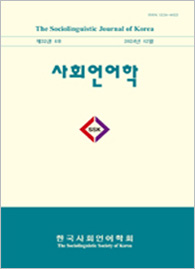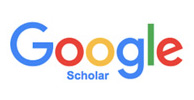![]() Journal Search Engine
Journal Search Engine
ISSN : 1226-4822(Print)
ISSN : (Online)
ISSN : (Online)
The Sociolinguistic Journal of Korea Vol.22 No.2 pp.65-90
DOI : https://doi.org/10.14353/sjk.2014.22.2.65
DOI : https://doi.org/10.14353/sjk.2014.22.2.65
Metaphor use in TED Talks: Implications for EFL
6. 9. 2014
8. 7. 2014
8. 10. 2014
Abstract
This study examines the use of metaphor in TED talks with respect to its density, distribution, and functions. Adopting a
cognitively-informed discourse framework of metaphor studies, the present paper quantifies and explicates the extent to which metaphors are mapped across the different disciplines of Art/Humanities, Natural Sciences, Social Sciences, and Technology. Also analyzed is the distribution of metaphor across word classes as well as the discursive functions that they work to
achieve. The findings indicate that TED Talks are dense with metaphoric lexical units regardless of the type of scholarly discipline. When considering the distribution across word classes, however, diverging patterns in the metaphoric use of nouns, verbs, adjectives, prepositions, and determiners create a dividing line among certain disciplines as in
Humanities/Art and Technology. The functions of these metaphors are also described in terms of representational, interpersonal, and textual use. Potential implications for EFL teaching as derived from the analysis are discussed at the end. (155)
cognitively-informed discourse framework of metaphor studies, the present paper quantifies and explicates the extent to which metaphors are mapped across the different disciplines of Art/Humanities, Natural Sciences, Social Sciences, and Technology. Also analyzed is the distribution of metaphor across word classes as well as the discursive functions that they work to
achieve. The findings indicate that TED Talks are dense with metaphoric lexical units regardless of the type of scholarly discipline. When considering the distribution across word classes, however, diverging patterns in the metaphoric use of nouns, verbs, adjectives, prepositions, and determiners create a dividing line among certain disciplines as in
Humanities/Art and Technology. The functions of these metaphors are also described in terms of representational, interpersonal, and textual use. Potential implications for EFL teaching as derived from the analysis are discussed at the end. (155)
초록
Figure
Table
Reference
Vol. 40 No. 4 (2022.12)

Frequency Published four times annually in March, June, September, and December
Doi Prefix 10.14353/sjk.
Year of Launching 1993
Publisher The Sociolinguistic Society of Korea



Online Submission
socioling.jams.or.kr
The Sociolinguistic
Society of Korea
socioling.com
Editorial Office Contact Information
- Tel: +81-10-3894-3164
- E-mail: schang@hoseo.edu






